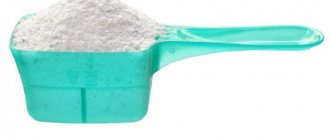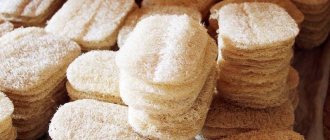When choosing a pumpkin in a store, first of all, you should ensure that the fruit is ripe (with a dense rind), without significant damage, with a dried stalk (tail). The size and color of the fruit do not significantly affect its consumer properties. It is not recommended to buy pumpkin halves, since in this case it is impossible to guarantee the sanitary and hygienic safety of the product.
Pumpkins of all types contain a lot of sugars, pectin and carotene. Pumpkin is also rich in minerals, primarily potassium, calcium, and phosphorus. The seeds contain a large amount of fats and proteins.
There are three groups of pumpkins: large-fruited, hard-bark and nutmeg. What is each of them suitable for?
Recommendations for choosing pumpkins were shared by expert in the field of vegetable growing Sergei Maslovsky, associate professor of the Department of Technology for Storage and Processing of Fruits and Vegetables of the RGAU-MSHA named after K.A. Timiryazev.
How to choose a good pumpkin?
A good pumpkin has a thick skin, but not “woody”.
Of course, there should be no cracks, soft spots, or dark spots on it - the latter indicate that the pumpkin has begun to rot. When choosing a pumpkin, don’t go for giant ones. In fruits that are too large, overgrown, the pulp may be dry, watery and bitter. Ripe pumpkins have a dark and dry tail. If there is no tail, it is better not to buy; perhaps the seller got rid of it on purpose, since the vegetable was picked ahead of schedule and did not have time to ripen. In addition, even the best pumpkin , left without a stalk, has a much shorter shelf life.
The pulp of pumpkins that have suffered from fungal diseases will be very tasteless and bitter. Dents, dark or pinkish spots on the peel may indicate a possible lesion. Also, unscrupulous sellers often cut off the affected areas and sell the pumpkin in pieces.
Which pumpkin is better? It all depends on what needs to be prepared from it and how long it is planned to be stored. Most often, there are three types of pumpkins found in markets and stores: hard-bark, nutmeg and large-fruited. There are also decorative ones, but they are usually not suitable for food.
In the markets you can find a dozen different varieties of pumpkins
How to store it correctly
Since ancient times, people have widely used pumpkin in their farms, not only because of its unusually beneficial properties, but also due to the fact that properly collected uncut fruits are perfectly stored for six months after harvesting.
Ripe, blemish-free and damaged fruits with a dry stalk are suitable for long-term storage. They are first dried in the sun for up to 10 days. Place for storage neatly, in one row, without touching, with the stalk facing up. It is best to store in a cool, ventilated, dark (no direct sunlight), dry place, such as a cellar, at a temperature no higher than 10 degrees Celsius (ideally 3 degrees Celsius) and a humidity of 60-75%.
Delicious recipe! What is Brut wine?
It is not advisable to store pumpkin in the refrigerator, especially cut ones. If you do store it there, use it within a week.
Store summer vegetables, of course, in the refrigerator.
Choosing butternut squash
Many people consider butternut squash to be the best and most delicious.
Butternut squash have an elongated shape, the fruit can look like a large zucchini, an overgrown cucumber or a giant pear, and its skin is thin and easy to cut with a knife. Pumpkins of this type often thicken closer to the flower, where their seeds are concentrated. Butternut squashes are the sweetest, making them ideal for baking and desserts. They are also especially rich in carotenoid vitamins.
In general, the best pumpkin, in the opinion of many, if not for one “but”: nutmeg varieties are stored less than others, and the longer they lie, the less sweetness and vitamins remain in them. Fruits that remain unsweetened until winter become unsweetened.
butternut squash
Which type of pumpkin tastes better?
I really love this vegetable. I make pies from it, bake it in the oven or make desserts. So I try to stock up on pumpkin for future use . But I choose my own variety for different purposes. On the market you can most often find three main types: hard-barked, nutmeg and large-fruited.
butternut squash
The most delicious and sweet variety. Ideal for sweet dishes, desserts and salads. The fruits are elongated, and the peel is thin and soft. Butternut squashes are very meaty. There are few seeds, and they are all concentrated in a thicker part closer to the flower, like a pear. The only negative is that pumpkin cannot be stored for a long time. Over time, the sweetness and beneficial substances disappear.
Large pumpkin
This red-haired beauty is well known to us. This is what most Halloween decorations look like. A round, slightly flattened pumpkin is the best choice if you want to stock up for the winter. After some time, starch, which is abundant in freshly picked fruits, turns into sugar. This makes the standing pumpkin even tastier.
Hardbark pumpkin
If you are a fan of cracking seeds in front of the TV, then you should choose this variety. Egg-shaped, slightly greenish pumpkins are not particularly sweet. They have a hard skin and dense flesh . The fruits have a short shelf life and are suitable for preparing side dishes for meat.
I buy a little bit of everything. I freeze part of the pumpkin , so it retains maximum beneficial properties. And we enjoy our favorite vegetable until spring. And the new harvest is not far away!
Previous article Next article
Choosing a large-fruited pumpkin
The main distinguishing feature of a large-fruited pumpkin is its round, flattened shape. This is the kind of pumpkin most of us imagine when it comes to Halloween.
Most often, the peel of large-fruited pumpkins is bright orange, but it can also be yellow, gray, or green. It is better to choose a large-fruited pumpkin if the purchase is made for future use: it is stored for a long time and, after sitting, it only becomes tastier. Freshly picked fruits contain a lot of starch, but over time it turns into sugar. Large-fruited pumpkins can be stored until spring.
The thicker the peel, the longer the pumpkin will last.
Interesting facts and a little history
Pumpkins are native to the arid regions of Central America. It came to Europe in the Middle Ages. “Turkish turban” - this is the name it had in the old days. In Russia it became known only in the 19th century.
In general, in the USA, pumpkins are a particularly revered fruit. And of these, the most revered is the butternut pumpkin, which was bred in 1960 here in the USA by crossing nutmeg varieties with wild African ones. It is easy to distinguish by its shape, similar to a pear, and also by its good taste.
The largest pumpkin in the history of mankind, according to the Guinness Book of Records, weighs 821.2 kg; the record belongs to a farmer from the USA. The key to success in growing such giants is abundant watering, bright sun and, of course, fertilizer.
Choosing hard-bark pumpkins
The hard-bark pumpkin is shaped like an egg, its skin is most often greenish and, as the name suggests, it is very hard and difficult to cut.
Another distinctive feature by which you can choose a hard-boiled pumpkin is that its stalk has peculiar edges and looks like an asterisk when cut. This type is not at all sweet. This pumpkin is better suited for preparing meat dishes and side dishes, when excessive sweetness spoils the taste. Its fruits are not stored well. But hard-bark pumpkin has the healthiest and most delicious seeds, which are also very easy to peel. There is a variety called “Gymnosperm” - its seeds do not need to be peeled at all.
Varieties with large fruits
Harvest
- Summer residents do not really like varieties that form large pumpkins, since you cannot eat the vegetable at once, and storing it in a city apartment is extremely inconvenient.
- Large-fruited pumpkin includes about 100 varieties.
Pumpkin lantern
Pumpkin lantern
- Refers to a variety of large-fruited pumpkin. It takes 3-3.5 months for the fruit to ripen.
- On the outside they are smooth, orange-pink in color, slightly ribbed.
- The shape is round, slightly elongated.
- Each specimen weighs 5-6 kg. The inside is tender yellow-orange, crispy, juicy.
- Picked pumpkin can be stored for 3-3.5 months. The variety is suitable for transportation.
- The harvested crop is subjected to heat treatment. Used for making juices and purees.
- The plant is heat-loving and drought-resistant. Plantings can be affected by powdery mildew and bacteriosis.
Russian porridge
Russian porridge
- Belongs to the large-fruited variety. It may take up to 4 months to receive the first fruits.
- The variety is considered mid-season. One bush produces 3-4 pumpkins, weighing 6-7 kg, orange-pink in color.
- Their shape is round, with subtle ribbing.
- The inner part is medium density, painted orange. The taste is good.
- The fruits can be stored.
- From the name you can already assume that the variety is excellent for stewing, baking, and boiling.
- It can also be used for canning and consumed unprocessed.
Use in cooking
Jan Elemans, Flickr
There are sugar squashes - with pulp that can be eaten raw, like fruit. This is a wonderful base for fresh salads - in combination with other vegetables (carrots, celery), fruits and berries. This ensures maximum preservation of vitamins (including ascorbic acid).
But the main value of pumpkin - provitamin A - is not lost even during heat treatment, and the absorption of carotene improves together with fats (milk, yogurt, sour cream, any butter).
Sugary pumpkin pulp is used in various dishes:
- it can be baked (steamed) and stewed, stuffed, served as a side dish in pieces and as a puree, prepared as a puree soup and soufflé;
- this is an excellent addition to dough: biscuits, pancakes, pancakes; wonderful filling for pies;
- classic dietary recipe - pumpkin porridge (especially millet);
- The preparations that come out to be original are: jam, compote with spicy cloves, candied fruits, dried and frozen pumpkin.
A healthy and tasty product is fresh and canned pumpkin juice (always with pulp).
What are the benefits of pumpkin
In terms of its healing and nutritional properties, pumpkin is ahead of many vegetables. It is one of the champions in the content of iron and potassium salts, and in addition it contains silicic acid salts, phosphorus, calcium, sulfur, magnesium, fluorine, iodine, manganese and other mineral elements.
With a low calorie content (29 kcal), pumpkin contains a lot of vitamins and glucose, and not only the pulp, but also other parts of the plant are eaten. In fact, people have found uses for literally all the “parts” of a pumpkin:
- pumpkin pulp improves digestion, reduces sugar levels, alleviates toxicosis and promotes milk production in nursing mothers;
- pumpkin juice is taken for obesity, anemia, diabetes, insomnia, colitis;
- pumpkin seeds relieve cramps and stomach pain, stimulate bone growth in children;
- pumpkin oil stimulates liver function, reduces cholesterol levels in the blood;
- The stems and leaves of the pumpkin are dried and infused, and then the infusion is drunk for edema and hypertension.
For gastritis, gastric and duodenal ulcers, raw pumpkin pulp and pumpkin juice are contraindicated.
Pumpkin "Yuchiki Kuri" - the best pumpkin for cutlets and pancakes
We should also be grateful to the Japanese for the appearance of this variety, because this unusual, tasty pumpkin was bred by Japanese breeders. Subsequently, the Kuri pumpkin became popular in many parts of the world, where it became famous under different names.
Pumpkin "Yuchiki Kuri". © Lyudmila Svetlitskaya
In Russia, its seeds are often sold under the name “Golden Pear”, other names of the variety: “Onion Pumpkin”, “Orange Hokkaido”, “Japanese Pumpkin”, etc.
The Yuchiki Kuri pumpkin is, first of all, notable for its unusual shape, reminiscent of a pear with a narrowed crown or a huge onion. The skin color is bright orange, sometimes there may also be small green markings on the skin.
The bright orange pulp has a dense, dryish consistency. The pumpkin tastes very sweet and is not at all similar to traditional pumpkin in either taste or aroma; its peculiar taste can rather be called nutty. (The taste of the nut becomes more intense in the most ripened fruits). This nutty flavor is sometimes described as “roasted chestnut notes,” hence the name pumpkin (“Kuri” translates to “chestnut” in Japanese).
These pumpkins are portioned, with an average fruit weight of one to two kilograms. An unusual feature of the “Yuchiki Kuri” variety is that these pumpkins can be used directly with the peel, which will give the dish a brighter color and richer aroma. But, of course, it’s not so easy to grind a fairly dense skin on a regular grater; this will require a powerful blender.
This sweet little pumpkin is good for baking, and we love it as the main ingredient for vegetable cutlets or pancakes. The dryish pulp does not add unnecessary moisture to the minced meat, and our food processor allows you to grind it together with the peel, which eliminates unnecessary work.
In cutlets, Yuchiki Kuri pumpkin is good in combination with potatoes, onions and carrots. And sweet pancakes are obtained by adding flour and eggs to pumpkin, and pancakes made from this type of pumpkin are especially tasty thanks to the original nutty flavor.
Pumpkin "Yuchiki Kuri" is very early and the first harvest can be harvested within 80-90 days after sowing the seeds. © fibromyalgie-clixart
Pineapple F1
Description. First generation hybrid. Nutmeg pumpkin, long-climbing, has good transportability and high shelf life. With proper agricultural technology and compliance with crop rotation, it is resistant to major diseases of melons and melons. The variety is mid-season: 110-125 days pass from planting seeds to harvesting. Productivity – 10-15 kg per plant.
The fruit is pear-shaped, with a beige-cream thin bark and yellow-orange dense pulp, weighing 1.5-2.5 kg. Hybrid Pineapple F1 is rich in ascorbic acid and carotene. The sugar content of the fruit is about 10%.
In addition to these sweetest varieties of pumpkin, there are many others. Perhaps some of them are already growing in your garden. Share it with us in the comments.
- Everything about pumpkins: from choosing seeds to storing the harvest
Didn't your pumpkins grow last year? No problem! We will teach you to avoid common mistakes in growing vegetables, so that in the new season you will not be ashamed of your harvest.
Medicinal properties of pumpkin
Often pumpkin is bought not only for culinary purposes, but also for medicinal purposes. The juice and pulp are especially useful in their raw form, when the healing and rejuvenating effects of the vegetable are most effective. Raw seeds are an effective anthelmintic. Fresh, pleasant-tasting flowers are also used for medicinal purposes. Proteins, enzymes, vitamins in pumpkin are uniquely harmoniously combined. Thanks to this, it, as an easily digestible and quickly digested product, is considered an excellent dietary food.
Pumpkin isn't just Halloween Jack-O-Lantern material, it's a healthy, delicious fall fruit. It is used in desserts, side dishes, baked, fried, and used as a filling. To choose a ripe, tasty pumpkin, you need to pay attention to some signs.
One of the most “autumn” vegetables is pumpkin. The fruits are consumed baked or boiled; they are suitable for children's diet food. In addition to the pulp, seeds are used and oil is extracted.
Features of cultivation
Pumpkin "Yuchiki Kuri" is very early and the first harvest can be harvested within 80-90 days after sowing the seeds. Each plant produces three to ten small one-dimensional pumpkins. The bushes of this pumpkin are powerful and long-climbing; they are very hardy and drought-resistant plants. Sowing is carried out in mid-May directly into the ground.
Pumpkin “Solor” is a European version of the pumpkin “Yuchiki Kuri”, bred on its basis. This variety is characterized by higher yield and good keeping quality of fruits. The fruits are slightly larger - about 3 kilograms. This variety also has orange flesh with a nutty flavor and early ripening.
Selection by purpose
Before you go to the store to buy a pumpkin, you need to have a clear idea of what it is needed for. For example, some dishes require honey-sweetness, while others do not require pronounced sweetness. It takes a lot of effort to find a pumpkin to seed.
For desserts
The sweetest pumpkin is butternut squash. A distinctive feature is the shape - in the form of a light bulb or a guitar. There are no seeds in the long and narrow part near the stalk - they are at the very end.
The only disadvantage of the variety is the rapid loss of taste. They contain the maximum amount of sweetness at the time of harvest. This figure is gradually decreasing. And starting from December, their attractiveness is completely lost. However, at this time large-fruited varieties go on sale, which are in no way inferior in taste and have a round shape.
For appetizers, for meat
Fruits with a neutral taste are excellent for second courses. This pumpkin does not interfere with the perception of the tastes of other foods. All these qualities are present in hard-barked varieties. They are distinguished by the ovoid shape of the fruit, the peel is quite hard and more like armor. These varieties can be found in the store from the second half of August until mid-May.
For seeds
Pumpkins intended for eating have quite a few seeds. In addition, their taste leaves much to be desired. If the main goal is not pulp, but seeds, then you should go shopping not to the store, but to the market. Households grow a large number of different varieties of pumpkin, but they all have one thing in common - large seeds with a thin skin. If you are very lucky, you can find seeds for sale without the skin.











